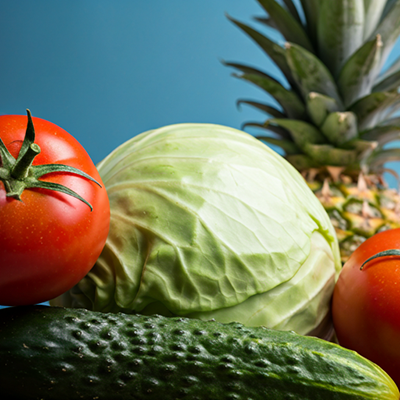Chlorine (Cl) mainly occurs in compound form with sodium or potassium and is widely distributed throughout the body in the form of chloride. It is needed, along with sodium, for production of hydrochloric acid (stomach acid). Without HCI, minerals cannot properly absorb, and proteins cannot be digested. Chlorine is also involved in fluid and electrolyte balance, and liver function.
It helps regulate the balance of acid and alkali in the blood and maintains pressure that causes fluids to pass in and out of cell membranes until the concentration of dissolved particles is equalized on both sides. It stimulates the liver to function as filter for wastes and helps clean toxic waste products out of the system. It helps keep joints and tendons in youthful shape and aids in distributing hormones. Chlorine is used to treat diarrhea and vomiting.

Sources
- Kelp
- Dulce
- Rye flour
- Ripe olives
- Tomatoes
- Cabbage
- Endive
- Kale
- Celery
- Turnips
- Cucumbers
- Asparagus
- Oats
- Pineapple
- Avocado
Deficiency Symptoms
Body fluid levels do not function properly, and digestion is poor. Hair and tooth loss can occur. Poor muscular contraction and impaired digestion can occur.
Caution
Chlorine is commonly added to drinking water (chlorinated water); but is a highly reactive chemical and may join with inorganic minerals and other chemicals, to form harmful substances. Chlorine in drinking water destroys vitamin E, as well as many of the intestinal flora that help digest food.
Dosage
RDA 1700 mg / ODA 2500 mg / TDA 500-2500 mg. You usually obtain enough in food. There is no recommended daily allowance for chlorine because the average person gets about 3-9 grams daily in the table salt sprinkled on food and the salt that is added to most processed foods.
HEALTH DISCLAIMER: The information on this website is for educational uses only and is not a substitute for professional medical advice. Always consult an authorized healthcare provider for any health concerns before using any herbal or natural remedy. We do not establish, treat, cure, or prevent any disease. Reliance on any material from this website is solely at your own risk. We are not responsible for any adverse effects resulting from the use of information or products mentioned on this website.
REFERENCES
Vance Ferrell, Harold M. Cherne, M.D. 2010.The Natural Remedies Encyclopedia. Altamont : Harvestime Books, 2010. pp. 112. Vol. Seventh.
